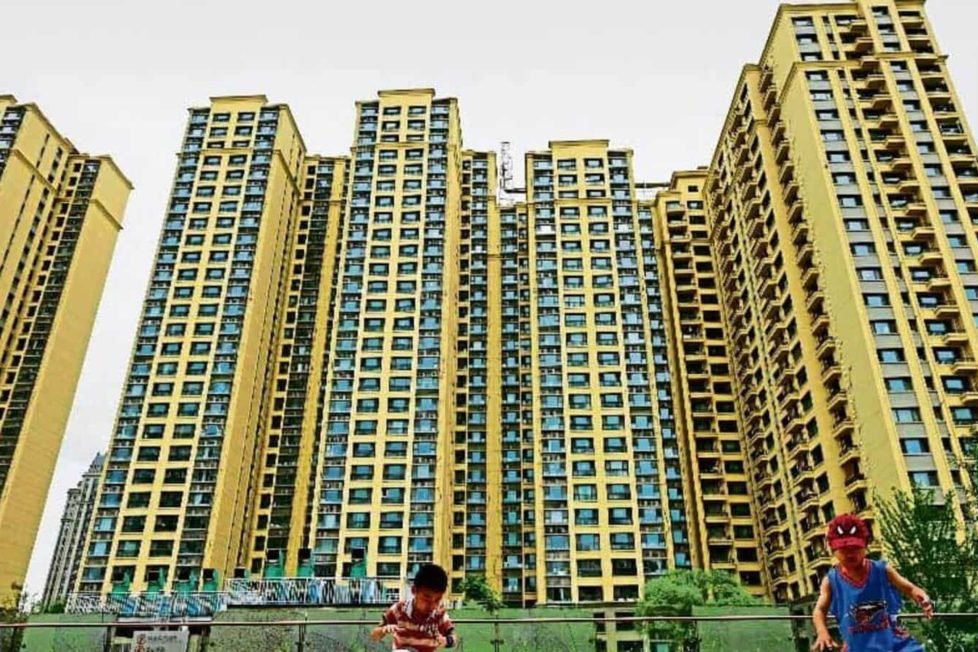China to knock down buildings that could house 75 million people


The real estate crisis in China is getting worse by the day. Indebted Chinese developers are in a crisis as the world’s second-largest economy suffers under the weight of a collapsing real estate industry. China now has large, deserted “ghost cities,” and when construction workers run out of money, demolitions take place. This is the result of massive amounts of debt-fueled construction. Hence a campaign of demolition is accelerating throughout the nation.
The Telegraph reported that analysts have warned Beijing has adopted a “build, pause, demolish, repeat” program as Chinese policymakers attempt to control supply in order to prevent a decline in real estate prices and promote economic activity through more development.
The Chinese government is apparently destroying tower blocks and suspending construction on buildings that could house 75 million people, or more than the entire population of the UK, in a bid to reinvigorate the stagnant real estate market.
The Telegraph stated that approximately three billion square meters of housing in China have been put on hold or destroyed recently, citing research by Fathom Consulting.
It further added, “A large potential supply is represented by vacant homes. When predictions for the housing market turn negative, a significant number of vacant homes will be put on the market, which could add to downward pressure on home prices.”
According to a BRI report published earlier this month, the average vacancy rate on the Chinese mainland is 12.1%. This is far higher than in the UK, where only 0.9% of properties are vacant, in Australia, where 11.1% are, and in the US, where 9.8% are.
According to research conducted last year by Ren Zepping, a former economist at the Center for Development Research, that number equates to over 50 million unoccupied apartments. According to official estimates, there are about 400 million residents on China’s mainland.
Not only this, Covid lockdowns have left residents short of food and essentials. At least 30 areas have issued orders requiring tens of millions of people to remain indoors during partial or complete lockdowns. One resident of western Xinjiang remarked, “It’s been 15 days, and we are out of flour, rice, and eggs. A few days ago, we ran out of milk for kids.”
Ahead of the Communist party convention in October, authorities are frantically trying to contain local outbreaks.
Strict lockdowns are necessary under China’s zero-Covid policy, even if just a few cases are known to have occurred. China reported 949 new cases of COVID on Monday nationwide.
A shared web document with over 300 urgent demands for food, medicine, and sanitary pads was extensively disseminated in Yining city, the capital of Ili. Another neighbor added, “My wife needs a medical checkup. I’m out of money to buy supplies. My wife is pregnant and we have two kids. We are running out of gas.”
Prior to this, In Xinjiang, China was charged with “serious human rights breaches” against Uyghurs and other primarily Muslim minorities earlier this month in a long-awaited UN report. According to rights organizations, over a million Uyghurs have been imprisoned against their will. Beijing claims to be using its network of camps as a weapon against terrorists.
Authorities in the southwest Guizhou province immediately shut off a section of Guiyang, the provincial capital, trapping 500,000 people inside their homes with no time to prepare. Building elevators were turned off to prevent people from leaving.
According to the Guardian, one user on the microblogging site Weibo asked, “Is the government treating us like animals, or do they just want us to die? We can’t buy goods online because they don’t deliver, and supermarkets are closed.”
The largest city to go under lockdown since Shanghai saw two months of restrictions earlier this year in Chengdu, the capital of Sichuan province. Only those of its 21 million inhabitants who can provide proof of a negative Covid test are permitted to leave the city or enter it to make purchases.
DISCLAIMER: The author is solely responsible for the views expressed in this article. The author carries the responsibility for citing and/or licensing of images utilized within the text.
